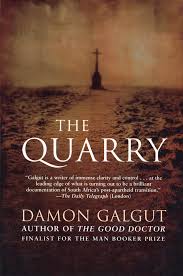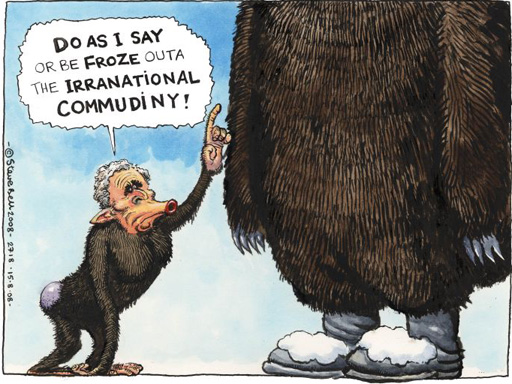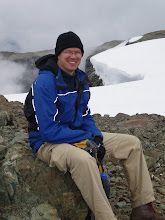In North America (and to a lesser extent in Europe) freedom of the press seldom extends to Israel’s affairs; that is, genuine sympathy for Holocaust suffering leaves Zionism above reproach. Ironically, Holocaust deniers tend to attract more positive press than IDF (Israel Defense Forces) attract negative press. Furthermore, a misconceived correlation drawn between modern geo-politics and Biblical kingdoms enforces this taboo.
“Alternate” sources, such as, CounterPunch, Democracy Now!, and Electronic Intifada, have consistently presented another side for debate; consequently, diligent readers of these publications were heartened by the appearance of a number of articles in “main stream” publications. (Furthermore, The Guardian and The Independent increased their solid coverage on the “Palestinian problem,” as did 60 Minutes). This greater exposure, however, seems to have fallen on deaf ears, since little evidence of editorial commentary or debate exists.
Even popular movements such as Viva Palestina, and Galloway’s subsequent ban from Canada haven’t stirred real debate, in the press or parliament, despite the efforts of Sir Gerald Kaufman and Ron Paul:
Unlike these level-headed and outspoken individuals most politicians have stood by and tested the waters. As a result AIPAC pressure was tolerated once more, namely Charles Freeman’s withdrawal. Fringe groups, perhaps buoyed by AIPAC success, also have been exerting pressure. Mearsheimer and Dreyfuss, however, maintain (separately) that this may be the lobby’s last gasp. For more information read Freeman’s resignation email and comments by Pat Buchanan.
Meanwhile the situation in Gaza grows more desperate: every day potable water becomes scarcer, electricity less reliable, and treatment of female and male prisoners worsens. Amidst analysis of Operation Cast Lead, which becomes more difficult to justify with Hamas’s surge in support, demands for justice grow louder, including those made at Iran’s international summit: the operation has been labelled an illegal war and evidence of war crimes mounts as more stories come to light. Some countries, such as Britain, may even arrest Israeli officials due to these allegations.
In the West Bank, despite the evidence from ancient documents verifying Palestinian ownership, residents continue to be evicted in Jerusalem. In rural areas villagers continue to be forced out, as their homes get destroyed, perhaps to fulfill an Israeli goal of doubling the number of settlers. As if a stamp of authenticity to Palestinian misery, the Lancet published an article on Palestinian (lack of) access to health care.
Another casualty of the Gaza bombardment was Israel’s proposed withdrawal from the Golan Heights, which becomes more critical since Syria continues to acquire Russian rockets. Israel may also have ambitions to relocate Kurdish Jews to cities in Iraq. Furthermore, it appears America will continue its decade long deal of $30 billion in military aid to Israel.
Nevertheless, all is not bleak. You can make donations to offset the military aid to Israel ($2.775 billion this year). Other good causes are Lights for Gaza and Disasters Emergency Committee. Voting with your dollar also is excellent, both by purchasing fair trade items and boycotting Israeli products. Lastly, join Jewish Voice for Peace, as Sahar Vardi, a young conscientious objector, implores people to do or sign on-line petitions.


 Last week I watched,
Last week I watched,  A number of exhibits have focussed on coming to grips with new communication technologies.
A number of exhibits have focussed on coming to grips with new communication technologies.  On a completely different tangent, Johan van der Dong, a Dutch artist, has set up an
On a completely different tangent, Johan van der Dong, a Dutch artist, has set up an  Last week I glutted myself on works by
Last week I glutted myself on works by 
 Since the heady days of youth, when, buoyed by Lillywhite and Lanois productions, I eagerly awaited every single from the Joshua Tree, I’ve kept my ear to the ground for breaking news on U2. The first morsels from No Line on the Horizon appeared when Bono inadvertently cranked up a few singles at an outdoor party. These rough recordings, however, didn’t compound my excitement for the latest album,
Since the heady days of youth, when, buoyed by Lillywhite and Lanois productions, I eagerly awaited every single from the Joshua Tree, I’ve kept my ear to the ground for breaking news on U2. The first morsels from No Line on the Horizon appeared when Bono inadvertently cranked up a few singles at an outdoor party. These rough recordings, however, didn’t compound my excitement for the latest album, 

 In the Gulf, a
In the Gulf, a  Directly west, it seems justice can be found on the Ivory Coast:
Directly west, it seems justice can be found on the Ivory Coast: 
 Israel continues to deny aid to the
Israel continues to deny aid to the  Technology continues to expand our capacity to explore the past. Given the current instability in Afghanistan, nearly every western archaeological excavation has been halted. This, however, has not disrupted work in the area:
Technology continues to expand our capacity to explore the past. Given the current instability in Afghanistan, nearly every western archaeological excavation has been halted. This, however, has not disrupted work in the area:  The practice of naming children according to the
The practice of naming children according to the  These days I am flexible enough to work where I like; armed with
These days I am flexible enough to work where I like; armed with  Lately, I have noticed that the staff have been in a classics phase, playing a lot of Dylan, Beatles, Bowie, et cetera. Among these, Neil Young has gotten the most air time, to my pleasure and delight. This exposure caused me to re-visit my own library, play some dusty songs and add some new ones.
Lately, I have noticed that the staff have been in a classics phase, playing a lot of Dylan, Beatles, Bowie, et cetera. Among these, Neil Young has gotten the most air time, to my pleasure and delight. This exposure caused me to re-visit my own library, play some dusty songs and add some new ones. 

